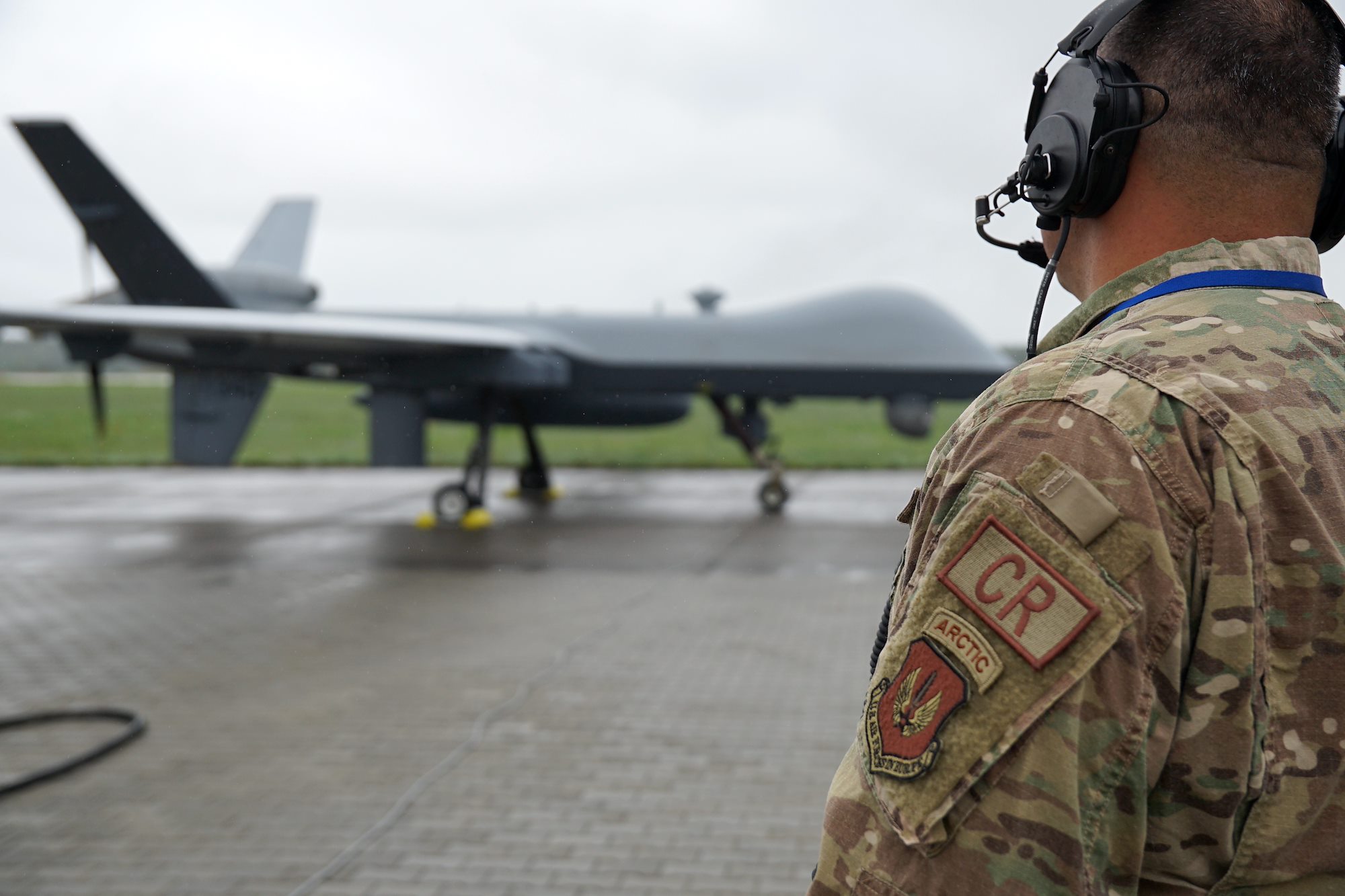In a remarkable milestone, the US Air Forces in Europe and Air Forces Africa successfully demonstrated the Satellite Launch and Recovery Package (SLR-P) for the MQ-9A Reaper in Poland.
The SLR-P represents a compact solution, integrating launch and recovery support capabilities for drones operating in remote and challenging environments. This groundbreaking demonstration occurred at the 12th Unmanned Aerial Vehicle Air Base in Mirosławiec, Poland.
The US Air Force mentioned that while various iterations of this concept have emerged in different contexts, the SLR-P introduces an innovative, “wallet-sized” solution ready to launch and recover the MQ-9A at strategically located theaters in some of Europe’s most rugged and remote outposts.
The utilization of this package represents a departure from established norms by obviating the need for the customary practice of returning a drone to its home station to undergo maintenance and servicing.
Furthermore, the integrated satellite technology within the SLR-P facilitates seamless connectivity, minimizing the need for extensive pre-mission preparations, effectively reducing downtime, and ultimately elevating mission readiness to a higher level.

The SLR-P system, which underwent testing in Poland, was custom-designed to serve the unique needs of the European and African theaters.
It comes with a compact mobile container and an inventory list tailored to address the distinct requirements and environmental variations in each region the service covers.
This container can be easily configured with attachable wheels, enabling it to be transported through various means, such as towing or carrying, depending on the mission requirements. This adaptability ensures the system’s suitability for different operational scenarios.
“We live in a volatile, uncertain, complex, and ambiguous world, which means it takes an innovative and motivated group of people – like what you see here – to influence change and propel us into the future,” said Major Philip “Flip” West, USAFE-AFAFRICA project lead.
“With this technology, we’re putting the ‘A’ in ‘ACE‘ (Agile Combat Employment) for the MQ-9A,” West added.
Fewer Boots On the Ground
The US Air Force said that the SLR-P system can significantly reduce the “boots on the ground” required for the sustainment and operation of precision systems like the MQ-9A.
Traditionally, conducting remotely piloted tasks requires approximately 30 to 150 personnel. In contrast, the SLR-P introduces a remarkable efficiency improvement, as it only requires an aircrew consisting of eight operators to manage these operations effectively.
During the recent activity, members of the 435th Contingency Response Group (CRG) from USAFE-AFAFRICA acted as the crew responsible for operating the MQ-9A.
“Empowering multi-capable Airmen is what we do every day,” said Colonel Robert Rayner, commander of the 435th CRG.
“The creation of the CRG 25 years ago aimed to extend air power beyond our main bases. While our primary mission is supporting mobility operations, we’ve adapted our capabilities to respond to what the Air Force, and specifically what USAFE, needs,” Rayner added.
He emphasized that the current demonstration involved launching and recovering MQ-9As, but this versatile capability could extend to different aircraft types.
“Today, we’re launching and recovering MQ-9As, but tomorrow it could be F-16s, and the next day, C-17s. Whatever the requirement, the 435th CRG remains light, lean, and lethal to support,” he said.
In addition to showcasing remote piloting capabilities, the service noted that the demonstration served as a testament to the joint efforts between the US and Polish military aimed at sharing security objectives and technological advancements.
Colonel Marcin Szubiński, the Polish Air Force’s 12th UAV Air Base commander, also highlighted Poland’s commitment to safeguarding its sovereignty and fulfilling its responsibilities as a crucial member of the NATO alliance.
He expressed pride in their contribution to testing this capability, building upon their five-year history of deploying cutting-edge ISR (intelligence, surveillance, and reconnaissance) technologies within EU airspace.
This commitment prioritizes interoperability with NATO allies while continuously refining procedures and capabilities to meet evolving needs.
This activity underscores the US Air Force’s concerted efforts to prepare its aircraft for deployment from rugged and remote areas while minimizing the personnel needed to maintain and operate them.
- Contact the author at ashishmichel(at)gmail.com
- Follow EurAsian Times on Google News